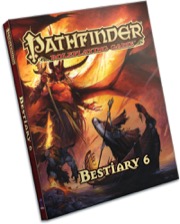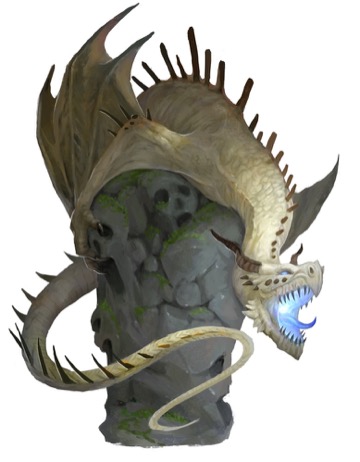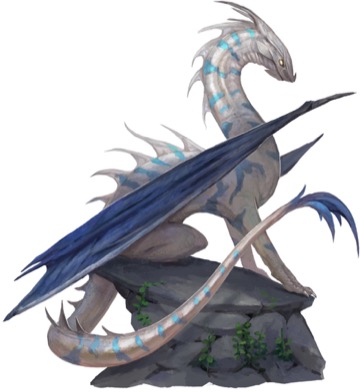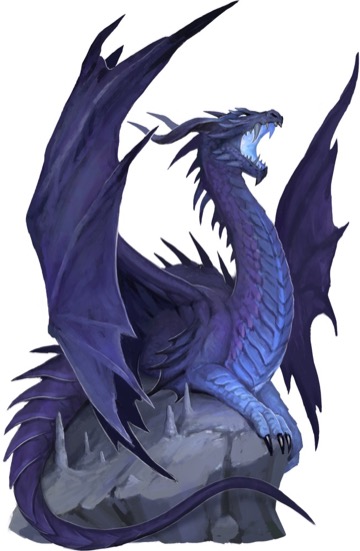Friday, November 10, 2017
Sure, we can probably all name adventures named after their big, spooky destination—anything from Hall of the Flesh Eaters to Crypt of the Everflame to Ice Tomb of the Giant Queen. Yet for all the gutsy action that takes place in these fanes of dark deities and towers of trash-talking tyrants, a big part of adventuring isn't about where you're going but how you got there. That means crossing the wilderness, the great nameless expanses that for many of us boil down to random encounters and conveniently forgetting to track rations.
So why is there such a dearth of adventures about exploration? One possibility is that location-based dungeon crawls lend themselves to more evocative titles, whereas stories about getting from Point A to Point B could as readily be named "The Ambushes Happen at Midnight," "A Tragic Series of Fortitude Saves," or the ever-popular "We Cast Teleport." Sure, we have some beautiful exceptions to this trend like the Kingmaker Adventure Path, but I'm going to posit we've really been waiting for fun ways to engage with the wilds and weave them more fully into our narratives.
Enter Pathfinder RPG Ultimate Wilderness, which hits shelves later this month. Whereas Stephen discussed shifters and Linda waxed poetic about leshys in earlier blogs, I'm excited to share some highlights from Chapters 4 and 5, which cover wilderness rules and companion creatures respectively.
Chapter 4: Mastering the Wild
I'd break down Chapter 4 into three major themes: travel, resources, and setting.
Travel's all about the making the wilderness experience more interesting. Full disclosure: I'm often a GM, so my definition of "more interesting" quickly gravitates to things that can kill or inconvenience the player characters. Like me, you might adore the Hazards and Disasters section (pages 146–151), which has rules for everything from brambles to volcanic eruptions to something cruel called "vampire orchids." Likewise, the Weather (pages 165–171) and Traps (172–173) sections are quite charming, providing not just a more robust system for determining what the weather's like outside, but also the rules for a swinging log trap that can knock out the party's wizard faster than you can say "martial-caster disparity." When I'm on the other side of the GM screen, I really enjoy being the party cartographer, so I quite like the Discovery and Exploration section (pages 124–127), which provides an easy-to-use, overarching rules system for exploring wilderness expanses, uncovering sites of interest, and turning the experience of reaching a dungeon into more than a brief travel montage. Perhaps the real gem is Spells of the Wild (pages 156–161), which provides a deeper look at common wilderness-oriented spells like pass without trace, diminish plants, and wind walk, particularly with an eye for how these spells can contribute to (but not necessarily bypass) wilderness exploration.


Illustrations by Roberto Pitturru
Resources cover all the great reasons the PCs would want to enter the wilderness voluntarily. Love free stuff (tends to share an answer with "Do you have a character?")? No doubt you'd love to be able to salvage components for alchemical gear, magic items, and costly spell components using the new Foraging and Salvaging section (pages 134–135). How about commemorating your latest kill with the Trophies and Treasures section (page 162–164), which provides ways to collect mementos, skins, claws, and more that you can use to create new items—which vary based on the trophies you collect—and remind you of your awesome deeds? Want to get more mileage out of Profession (herbalist)? Me too! Now you can with the new Herbalism rules (pages 152–155). But wait, there's one more prize awaiting you, and it's one of the requests I've heard most for Pathfinder RPG: Harvesting Poisons (pages 142–145), allowing you to at last extract the poison glands from one beast and jab them into another.
Finally, I'd like to linger for a moment on the setting resources, which cover two easily-incorporated pieces of Golarion lore that bring the wilds to life: the First World (128–133) and the Green Faith (136–141). The First World is the "first draft" of the world as we know it, having been plastered over with a new reality by the gods. That suits the native fey just fine, though every once and a while the boundaries between the two realms grow thin and allow enterprising explorers back and forth. If you like what you see, I recommend also checking out Pathfinder Campaign Setting: The First World, Realm of the Fey. Meanwhile, think of the Green Faith as the venerable religion that doesn't just seem to predate worshipping the gods; it spurns anthropomorphization of nature altogether. Founded when four rival sects of nature-worshippers witnessed a beautiful natural phenomenon and averted destroying each other in a civil war, the Green Faith represents the faceless power that fuels much of druidic magic.
Not enough? Very well...
Chapter 5: Companions and Familiars
What book about nature is complete without a bunch of new animal companions? Ultimate Wilderness has tons of new options for new animal companions, ranging from the eohippus (an early ancestor of the horse) to the marsupial devil to the full-size (read: Large) grizzly bear! Be the first to train a saber-toothed cat. Dive deep beneath the sea in the belly of your pet anglerfish. Relish the sight of your GM struggling to respond when you ask if your paladin's divine mount can be a giant porcupine. Speaking of which, page 178 also incorporates a bunch of these new options into the cavalier's, paladin's, and ranger's list of available animal companions. Author Mikko Kallio did a great job here.
Animals are great, but what've really captured my attention since Ultimate Magic and Advanced Race Guide were the vermin and plant companions respectively. At long last, in Ultimate Wilderness, I got to write a pile of fun new vermin and plant companions. Some of my favorite plants include the creeping puffball, which explodes in Wisdom-damaging poison when struck; the gulper plant, which lets you recruit a walking pitcher plant as your battle buddy; and the sniper cactus, which can fire its spines at distant targets. There's also an array of vermin companions, including the giant mantis shrimp, which can make iterative attacks with its pincers; the web tyrant spider, which focuses on web-throwing rather than poison; and the giant solifugid, adept at pouncing on anything that moves. Want familiars? You can also recruit the suture vine, a symbiotic plant that survives on blood but also knits your wounds back together as it feeds; the giant tardigrade, an "immense" version of the thoroughly unkillable micro-organism; and the ravenous tumbleweed, a carnivorous plant that attacks by charging into its prey and gains extra speed during windstorms.
There's so much more in here, from companion and familiar archetypes to new animal tricks to new companion feats. There's just not time enough to cover it all, so I encourage you to grab a copy of Pathfinder RPG Ultimate Wilderness today!
John Compton
Organized Play Lead Developer














